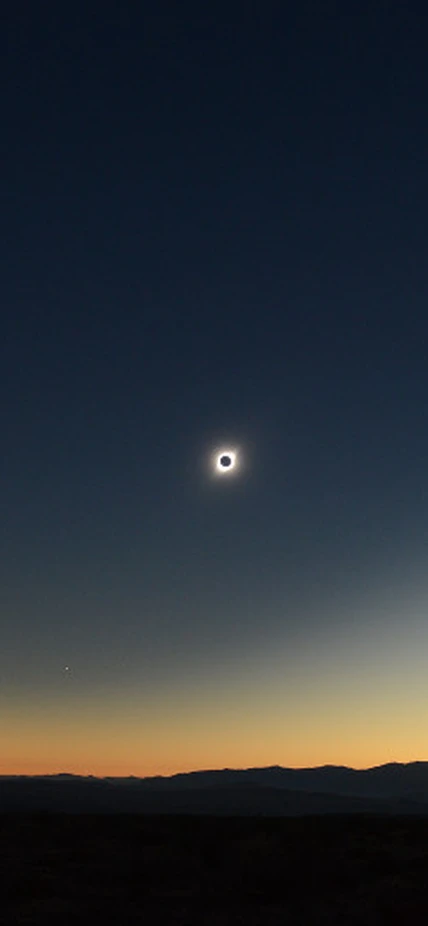Dear Friends,
I hope you have enjoyed the summer so far. As you'll see from this issue, it has been a productive few months for our astronomers with exciting new results on many topics from the discovery of planets around nearby stars and the detection of a very unusual supernova to an exciting new way to measure the rate at which the universe is expanding.
I recently returned from Carnegie's Las Campanas Observatory in Chile where I was fortunate to view the total solar eclipse on July 2nd. A total solar eclipse is a rare event; in a given location, they occur about once every 375 years. For this reason, much of our staff in Chile has spent the last year preparing for the event—and for the associated crowds. In the end, we had several hundred visitors tour our facilities that week. I know it was a memorable experience for me and for everyone who was able to see one of nature's finest shows above the spectacular Atacama Desert in Chile.
Summer is also an exciting time on our Pasadena campus because of our annual undergraduate internship program, which is run by staff astronomer Gwen Rudie with the help of many of our postdocs and senior scientists. This year, we are hosting 16 students from Southern California colleges and universities. The students spend 10 weeks at Carnegie working closely with a supervisor on a research project. During their time in Pasadena, the interns are fully immersed in life here at The Observatories, attending our daily science tea discussions and talks by visiting experts, as well as workshops designed specifically to build their skillsets, such as a “bootcamp” in computer programming. At the end of the summer, each student will present a summary of their project. It is a great way to inspire the next generation of scientists, and many of the students who participated in previous years have gone on to pursue advanced degrees in astronomy and astrophysics. Finally, I'd like to acknowledge that this work is only possible because of the generous support of the Rose Hills and Ralph M. Parsons Foundations.
This time of year, we also look forward to welcoming our new postdoctoral fellows to The Observatories. We'll be highlighting the research of some of these young astronomers in the future. Meanwhile, in this issue you can learn more about the pursuits of one of our recent new arrivals, Ylva Götberg, who is our second Alvin E. Nashman Fellow. This is a new fellowship in theoretical astrophysics that was created thanks to a generous gift from Alvin and Honey Nashman. Ylva's work is in the area of binary star evolution. This is a particularly important topic because most stars occur in binary systems; therefore, an improved understanding them is needed to address many outstanding issues in astronomy from the creation of the elements to the birth and evolution of galaxies. I know you will enjoy reading about Ylva's important contributions to this topic.
Lastly, I’m excited to announce that thanks to a generous grant from the Ahmanson Foundation, The Observatories is well on its way to funding our plan for a “viz lab” on campus. Spearheaded by staff astronomer Juna Kollmeier, the project will enable our researchers to interrogate both simulated and observed data and make breakthroughs in the field of astrophysics. Hopefully, we will be able to share more news about the creation of this exciting tool with you soon.
Dr. John Mulchaey
Crawford H. Greenewalt Chair and Director
Carnegie Observatories
